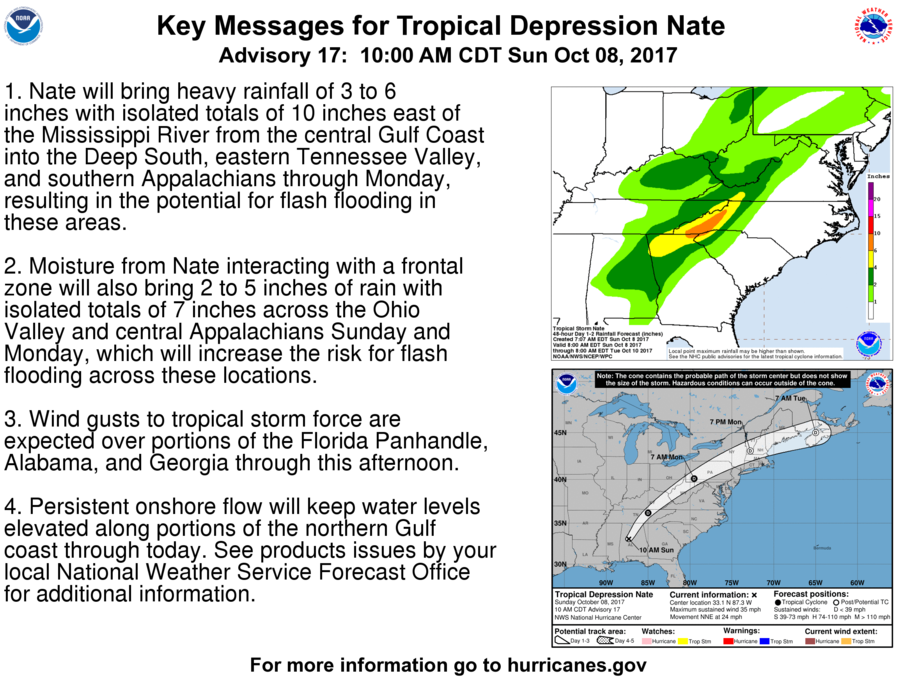National Hurricane Center - Page for the Atlantic Basin
National Weather Service - San Juan Field Office
NWS Southern Region Tropical Webpage
Hurricane Nate is strengthening as it heads toward landfall on the northern Gulf Coast
Hurricane Nate lashes Louisiana; Category 2 landfall expected
US Gulf Coast braces for fast-approaching Hurricane Nate
SPC Mesoanalysis Tool for the Gulf Coast
NOAA Tropical Atlantic satellite imagery
NOAA Tropical hurricane models
US Naval Research Laboratory - Tropical Cyclone page
USDA Offers Food Safety Tips for Areas Affected by Hurricane Maria
Louisiana Governor's Office of Homeland Security & Emergency Preparedness
Plymouth State Weather Center - Tropical page
College of DuPage Satellite Images
GOES & Himawari Satellite Images
NOAA brief explanation of hurricane physics
More detailed scientific description from MIT
National Hurricane Operations Plan
Saffir-Simpson Hurricane Scale table
Use regular household bleach, which the only active ingredient is ‘sodium hypochlorite’. Having said that, one best way to purify water for drinking is to boil it for 1 minute. Once the water has reached a rolling boil, it has become safe to drink.
Note that if the water source had been contaminated with chemicals, boiling it or otherwise treating it will NOT assure that the chemical is removed.
Know your water source as best you can.
UPDATE: For many years, regular bleach contained a concentration of 5.25% – 6% sodium hypochlorite. Newer ‘regular’ liquid bleach may contain a concentration of approximately 8% sodium hypochlorite (about a third more than the original bleach formula).
Mix the following amount of bleach with water, and wait 30 minutes for it to work. The water should have just a ‘hint’ of chlorine smell. WATER – BLEACH RATIO FOR PURIFYING DRINKING WATER
(5-6% Sodium Hypochlorite) numbers are ’rounded’
1 Quart water, 2 drops bleach 1 Gallon water, 8 drops bleach 5 Gallons water, 1/2 teaspoon bleach 10 Gallons water, 1 teaspoon bleach 50 Gallons water, 5 teaspoons bleach
(8.25% Sodium Hypochlorite) numbers are ’rounded’
1 Quart water, 1 drop bleach 1 Gallon water, 5 drops bleach 5 Gallons water, 3/8 teaspoon bleach (or three 1/8th teaspoons) 10 Gallons water, 3/4 teaspoon bleach 50 Gallons water, 3.5 teaspoons bleach
http://modernsurvivalblog.com/survival-kitchen/bleach-water-ratio-for-drinking-water/
Updated on 2017-10-07 at 18:10 UTC. Forecaster Weatherwax
